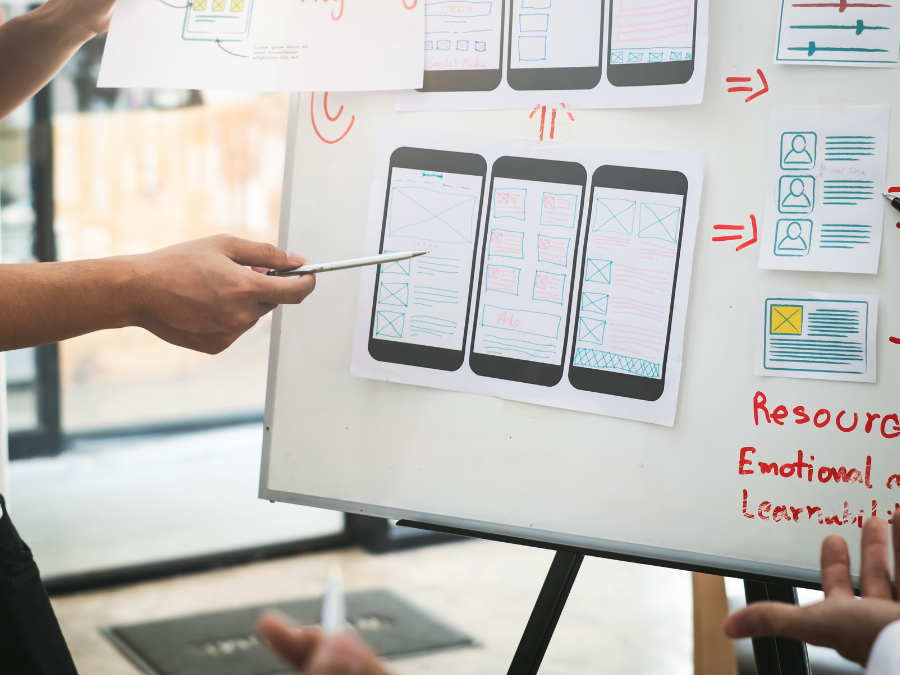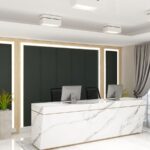In an era dominated by digital, brick-and-mortar retail stores remain an enduring testament to the tactile experience of shopping. Every inch of a store tells a story, influencing not just buying choices but our perception of a brand. The art of crafting an effective retail layout goes beyond aesthetics; it’s a symphony of psychology, design, and strategy. As thought leaders, we understand that a successful retail space is a meticulously planned journey that guides, inspires, and engages customers from entry to checkout.Dive into this guide to decode the strategies that shape this immersive journey.
Defining the Concept
Retail layout strategies involve optimizing a store’s physical space to enhance customer flow and boost sales. At its heart, it’s about designing aisles, product displays, and other elements to foster a seamless shopping journey. It aims to guide customers through the store, exposing them to a maximum number of products, thus influencing their buying choices.
Central to these strategies is the idea of “customer flow.” It’s about understanding how customers move around, what draws their gaze, and the route they take. Delving deep into this concept ensures a satisfying shopping experience.
The Importance of Layout Design
A store layout is crucial—it’s the very first interaction between the store and its customers:
- Impact on Customer Buying Behaviour: A strategic layout can push customers to discover new products. For instance, a clothing store placing accessories near apparel might prompt customers to buy matching accessories.
- Time Spent In-Store: Captivating displays and clear pathways entice customers to stay longer, increasing purchase probabilities. An electronics store with interactive demo stations is a case in point—it prolongs customer stay and promotes sales.
- Overall Customer Experience: A neat, aesthetic layout can make customers come back. A bookstore with cozy reading spaces, for instance, invites customers to linger, fostering loyalty.
Understanding Customer Behaviour in the Store
Knowing how customers act is key:
-
Navigating the Store
Customers tend to follow a predictable path when navigating a store. Research suggests that a majority of customers naturally turn right upon entering. Understanding and utilizing this tendency is crucial in layout planning.
For instance, a clothing store can strategically position new arrivals or special promotions to the right, immediately grabbing the attention of customers as they enter.
-
Interaction with Products
Customers are more likely to notice and engage with products placed at eye level or within easy reach. High-demand items are often strategically placed at the back of the store, encouraging customers to navigate through other products, potentially leading to additional purchases.
In a grocery store, staple items like milk and eggs are often placed at the back, ensuring that customers traverse through the store, potentially picking up other items on the way.
Store Entry Area (Decompression Zone)
This area is crucial as it forms the first impression:
-
Inviting and Informative
This area should be inviting and informative, offering customers an overview of what the store offers. Well-designed signage and attractive displays can captivate attention and set the tone for the shopping experience.
Imagine a new bookshop in town. The entry area could feature a display of bestsellers, enticing passers-by with familiar titles and new releases, inviting them to step in and explore.
-
Right vs. Left
Research indicates that customers tend to turn right upon entering a store. Retailers can capitalize on this tendency by strategically placing high-margin or popular products on the right side to capture immediate attention.
A jewellery store can employ this strategy by placing its most exquisite and high-priced pieces on the right side, making a strong visual impact as customers enter the store.
Product Placement Strategies
- High Demand and Impulse Products:
Strategically placing high-demand items at the back of the store and impulse products near the checkout counters can encourage customers to navigate through the entire store, increasing the likelihood of additional purchases.
In a supermarket, snacks, magazines, and small impulse-buy items near the checkout counters can entice customers to add more to their baskets before completing their purchase.
- Power Walls:
The power walls, typically the first walls visible upon entering, are prime real estate for showcasing products. Retailers can use these walls to create a visual impact by featuring best-selling or high-margin items.
In an electronics store, the power wall can showcase the latest and most advanced gadgets, immediately grabbing the attention of tech enthusiasts as they enter.
Path and Aisle Design
Clear paths and well-designed aisles are essential for guiding customer flow. Strategies like wider aisles, strategic product grouping, and informative signage can enhance navigation and encourage exploration.
Consider a home improvement store with a spacious layout, and strategically organizing aisles based on project needs. Clear signage indicating aisles for plumbing, electrical, or gardening helps customers easily find what they’re looking for, enhancing their shopping experience.
- Free Flow Layout
The free flow layout is a design strategy that provides a sense of luxury and encourages browsing. It’s characterized by more open space, allowing customers to move freely and discover products at their own pace.
In a high-end fashion boutique, a free flow layout can be adapted to create an upscale shopping experience. Customers can freely browse and explore the luxurious garments and accessories on display, fostering a sense of exclusivity.
- Grid Layout
The grid layout, often seen in grocery stores, is a structured and straightforward arrangement. It’s ideal for stores with a wide range of products, ensuring organized and efficient shopping.
A grocery store can effectively use a grid layout, organizing products in neat rows and columns. It provides a systematic and straightforward shopping experience, allowing customers to quickly find what they need in the well-arranged aisles.
In-Store Experiences
Incorporating in-store experiences, such as interactive displays, product demonstrations, or digital interfaces, into the layout can enhance engagement and retain customer attention.
For example, an electronics retailer can incorporate interactive displays that allow customers to test and experience the latest gadgets. This interactive element not only engages customers but also provides valuable insights into the product’s features, potentially leading to a purchase.
The Checkout Area
The checkout area is the last opportunity to influence customer buying decisions. Retailers can optimize this space for impulse purchases by strategically placing low-cost, high-appeal items.
At the checkout of a home goods store, small, affordable items like scented candles or novelty items can be displayed to entice customers to make a last-minute purchase, increasing the average transaction value.
Adapting Layouts to Changing Consumer Behaviour
In a rapidly evolving retail landscape, consumer behaviour is constantly changing. Retailers must remain flexible and adapt their store layout strategies to align with these changing behaviours and trends. Regularly analyzing customer data and feedback can provide valuable insights to refine the layout for optimal results. Stay attuned to evolving consumer preferences and ensure your strategies stay ahead in the competitive retail landscape.
TradeGully: Your Expert in Retail Layout Excellence
Crafting a retail environment that captivates, guides, and converts is no small feat. With TradeGully, you tap into a wellspring of expertise tailored to Retail Space Design, Customer Flow Optimization, and Cutting-Edge Store Experiences. Our dedicated team understands the nuances of consumer behavior, ensuring your retail space isn’t just a store, but a destination.
Invest in excellence. Transform your retail space with TradeGully, where every layout decision is a step toward greater customer satisfaction and higher sales.
Discover More About TradeGully’s Retail Layout Solutions
FAQs
What are retail layout strategies?
Retail layout strategies involve organizing and arranging products, fixtures, and customer traffic patterns in a store to optimize product visibility, accessibility, and sales.
What are the 4 main types of store layouts?
- Grid.
- Herringbone.
- Loop (Racetrack)
- Free-Flow.
What is the importance of retail layout?
A well-designed retail layout enhances the shopping experience, promotes product discovery, and drives sales by guiding customers effectively through the store.
Which layout is used in retail stores?
The choice of layout varies by store type. For example, grocery stores often use a grid layout, while boutique shops might prefer a free-flow design. The layout should match the retailer’s goals and customer expectations.






